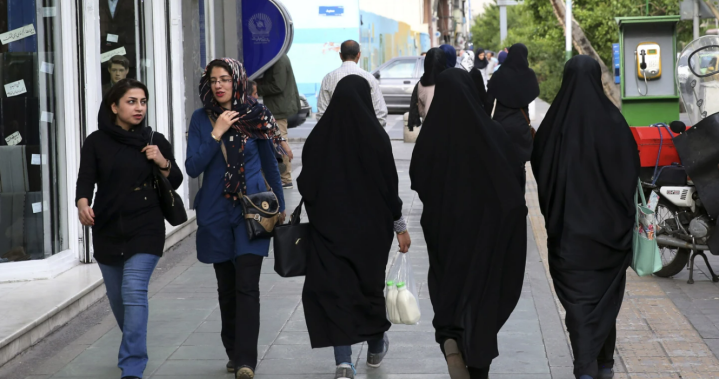Editor’s Note: This article contains disturbing details that could trigger and upset some readers. Discretion is advised.
It’s been more than 20 years since Lily Pourzand fled her home, fearing persecution for her work in support of women’s rights and seeking safety outside the country that imprisoned her parents.
Her mother was a human rights activist and lawyer in Iran, who was eventually exiled; her father, a well-known journalist before the 1979 Islamic Revolution, was tortured behind bars before his death under suspicious circumstances.
That was after she fled in 1999, having graduated from law school and written an article about laws requiring women to wear the hijab.
“I’d been threatened to be kidnapped, raped, killed and basically I left the country quickly and came to Canada,” Pourzand told Global News. “The system has been very brutal against Iranian women.”
The hijab, an Islamic head scarf, has been at the symbolic centre of months of protests in the streets of Iran, sparked by the death of Mahsa Amini last September. The 22-year-old died in the custody of Iran’s so-called morality police for reportedly wearing her own hijab too loosely.
While the morality police never left Iran, they peeled back their physical presence on the streets after Amini’s death, turning to artificial intelligence to enforce the mandatory dress code as authorities struggled to contain the demonstrations. On Sunday, however, the Islamic Republic interrupted its regular programming to declare the full return of enforcement.
Gen. Saeed Montazerolmahdi, a police spokesperson, said the morality police would resume notifying and detaining women not wearing hijab in public. The move was said to be both for their mental health and the security of society.
Iran has been ruled by a theocracy for more than 40 years, with calls to overthrow its leaders reaching new heights after Amini’s death. Women have played a leading role in the demonstrations, and on Monday, both Pourzand and Iranian American human rights lawyer Gissou Nia said they will continue to do so.
“Iranian women and Iranian civil society are not going back to where they’ve been 10 months ago,” Pourzand said. “Iranian women rise on their own, they’re each other’s shoulders.
“The leaders are imprisoned, basically. Many of them have been murdered, many of them have been forced into exile, so it’s not a one-night movement. It has a history, it has its own roots and they’re not going to give up the fight.”
Cracks in the system, built on “gender apartheid,” are growing and the regime knows it, Pourzand added.
Protests in Iran largely died down earlier this year following a heavy crackdown in which over 500 demonstrators were killed and nearly 20,000 detained. But many women continued to flout the official dress code, especially in the capital, Tehran, and other cities.
Nia said that’s a sign that resistance continues to flourish, as is the recent targeting of their male allies.
“We saw that today, Majid Tavakoli, a renowned dissident and activist, was sentenced to six years in prison, truly only for tweeting philosophical musings on his on his Twitter and sharing those in clubhouses,” she said.
“This past weekend, Mohammed Sadeghi, who is this young, very handsome Iranian actor, was — in what was pretty gripping events — arrested in a raid on his home that was being broadcast live on social media. That was, again, just for his point about women being detained by the morality police and saying that he completely objects to that.”
The website of the semi-official Hamshahri daily, which is affiliated with the Tehran municipality, said he was arrested for encouraging people to use weapons against the police.
Iran’s government has blamed the protests on a foreign conspiracy, without providing evidence.
Nia said the protests are about dismantling the “gender discriminatory framework” rooted in the Islamic penal code, which identifies men as the exclusive head of the household and automatically provides custody of children born after a divorce to the ex-husband, provided a woman has not remarried, for example.
“Until that framework is dismantled, we’re going to continue to have this issue of massive inequality between men and women in the country, and that’s enforced as a matter of law,” Nia explained.
Pourzand, meanwhile, said she sees Sunday’s announcement as a sign of “fear” from the Islamic regime in the aftermath of the movement — dubbed Women, Life Freedom.
“They know that they cannot control anymore. They know that there are too many women know, that they want the same thing. They want freedom, and Women, Life Freedom also expanded the demand of change not only for women, but also for minorities.”
— with files from The Associated Press
© 2023 Global News, a division of Corus Entertainment Inc.
Stay connected with us on social media platform for instant update click here to join our Twitter, & Facebook
We are now on Telegram. Click here to join our channel (@TechiUpdate) and stay updated with the latest Technology headlines.
For all the latest World News Click Here

